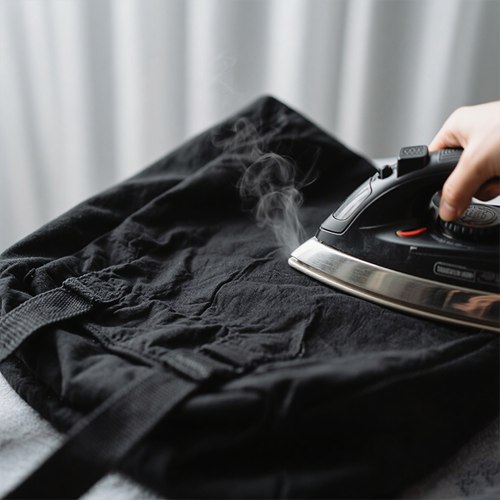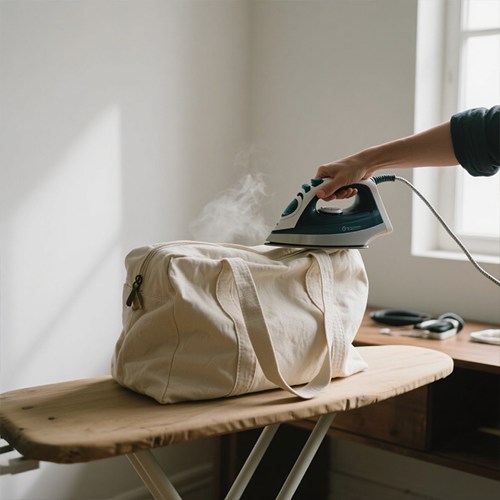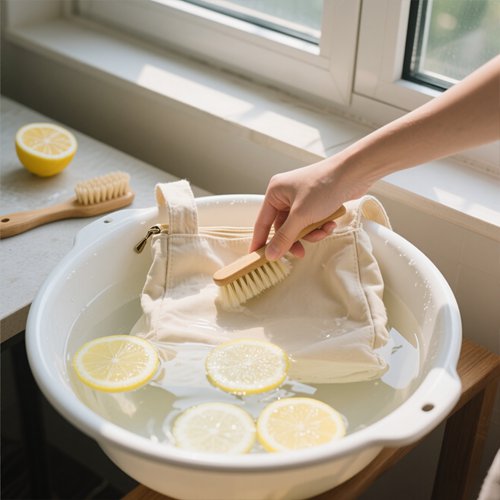Introduction: My beloved canvas bag is lightweight, versatile and eco-friendly. It's simply a soulmate for daily outings! But after carrying it for a long time, it's inevitable to encounter two major "appearance killers" : being limp, deformed and out of shape, or yellowing and looking old for no reason. Don't rush to retire it! Today, I'm going to share a few super practical "first aid" tips that you can easily operate at home and give your canvas bag a new lease of life!
The first first aid tip: Combat deformation and restore firmness!
After being used for a long time, especially when a canvas bag has been loaded with heavy objects or washed, it is very easy to become soft and lose its original shape. Don't worry. Try these methods:
1、"Hold on!" Internal shaping method
Filling method: Before washing and drying or during daily storage, stuff in clean old clothes, bubble wrap, kraft paper balls or special bags. Focus on filling the bottom and both sides of the bag body to help it restore its original shape. When storing, be sure to fill it up so that it can "stand" up.
Cardboard/folder rescue: In cases where the bottom of the bag collapses particularly severely, cut a piece of cardboard or plastic folder that matches the shape and size of the bottom of the bag and insert it into the inner lining of the bottom of the bag (if available) or directly place it at the bottom. This can effectively provide support and prevent the bottom from sagging and deforming.

2. "Hot" back! Low-temperature ironing and shaping (operate with caution) :
If the bag is only slightly deformed locally (such as curled edges at the bag opening or wrinkles on the sides), you can flip it over when the canvas bag is slightly wet (in a semi-dry state without dripping water).
Place a clean white cotton cloth underneath (to prevent the iron from directly touching the canvas and causing it to shine or get damaged).
Set the iron to a low temperature (no steam mode or wool setting), and iron the deformed area quickly and gently. Remember! Be sure to test the temperature in a small area in an inconspicuous place first to avoid being burned by high temperature!


The second first aid tip: Say goodbye to yellowing and regain cleanliness!
Yellowing of canvas is usually caused by oxidation, sweat stains, residual dirt or improper cleaning. Try these gentle and effective methods to remove yellowing:
1、Natural bleach: Lemon + sunbathing:
Squeeze fresh lemon juice into a basin (or use white vinegar instead, which has a similar effect but a slightly stronger vinegar flavor), and add an appropriate amount of cold water.
Soak the yellowed canvas bag completely in it, making sure it is thoroughly soaked.
After soaking for 1 to 2 hours, take out the bag. Do not wring it out! Hang it directly in a sunny place to dry. Citric acid (or acetic acid), in combination with ultraviolet rays in sunlight, can gently oxidize and decompose the pigments that cause yellowing. This method works well for natural cotton and linen canvas, but caution is needed for dyed canvas. First, conduct a small-scale internal test to see if it fades.

2. Mild oxidation and stain removal: Soaking in oxygen detergent/baking soda
Prepare a basin of warm water (around 40 degrees Celsius), add an appropriate amount of oxygen cleaner (or a cleaning product mainly composed of sodium percarbonate) or baking soda, and stir until dissolved.
Fully immerse the canvas bag to ensure that the solution covers the yellowed areas. The soaking time depends on the degree of yellowing, usually ranging from 1 to 4 hours.
3. Focus on rubbing: For stubborn yellow stains, after soaking, gently scrub the yellowed area with a soft-bristled brush.
Finally, rinse thoroughly with clean water! Avoid secondary yellowing caused by residue.

4. Toothpaste "brightens" the local area:
For small, not too severe yellowing stains (such as sweat stains on the shoulder strap), you can try using white paste-like toothpaste (not gel, not colored).
Squeeze a small amount of toothpaste onto an old toothbrush or soft-bristled brush, dip it in water, and gently scrub the yellowed areas.
After standing for a few minutes, rinse thoroughly with clean water. The abrasives and surfactants in toothpaste have certain stain-removing and brightening effects.







 Contact Us
Contact Us



 Network Supported
Network Supported